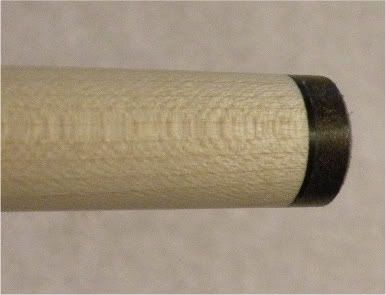That is not true, I have all the major sets of balls made in the last century, I am a collector and have sets from every decade in the 20th century, and even my clay balls from the early 1920's weigh around 5.8, where todays balls weigh 6.0. I check balls on a high end digital scale, every ball I weigh.
Every long set I play, I hit a jump shot and a Masse with my regular cue, and do that with out a ferrule, and your end of your shaft is going to look like a banana peel when it blows up. Yes I carry a dedicated jump cue and a dedicated masse cue, but on simple shots, I dont have to pull them out. I hit a lot of force follows, force draws playing 9 ball with tremendous force especially when I am on a 9' table with old slow house cloth, I have to pound the ball, to go up and down table on many shots.
I dont play but once a week, so I am out of stroke a lot, and get out of line a lot, which requires me to grip and rip it to get back in line.
I intend to keep my ferrule on. I like the saying, if it aint broke, then dont go trying to fix it. Leave it alone and focus on something else.
The people who started this, Jewett was one of them, are 3-cushion players. Carom Ball – 61.5 mm (2 7⁄16 in)
American-style pool Ball – 57 mm (2 1⁄4 in)
Their ball is a little bigger, we use it as a cue ball on some bar boxes, and yes, it is a little heavier, not much, and its made out of the same material as the pool ball.
Making a 3 cushion bank with it, on a 3-c table, requires about 50% less power than the same shot on a pool table. They have these tables now so hot, they can just peck the ball and go 5 or 6 rails. Force is rarely now used on a shot, it all a soft game of finess shots. I do play the game, now and then. I have played Sang Lee and Culemans.
They are on a $12,000 Verhoven, with 300 cloth and a heated slate, and german artemis rubber, and those balls are highly polished and hotter that the pool cue ball. Their table is 50-75% faster, than the average pool hall pocket table. I tell you this so you can make comparisons.
I could see where this might work in 3-c, or even snooker, but pool, that one really scares me. I'll just sit back, and observe this one if you dont mind. I am not putting any money out on this, I find it to be high risk. I dont want to cut my stroke back to peck and poke. When I see Johnny, Earl, Efren and all the big boys using it, then I'll check it out. Promise I will. Lots of luck, to the rest of you.
